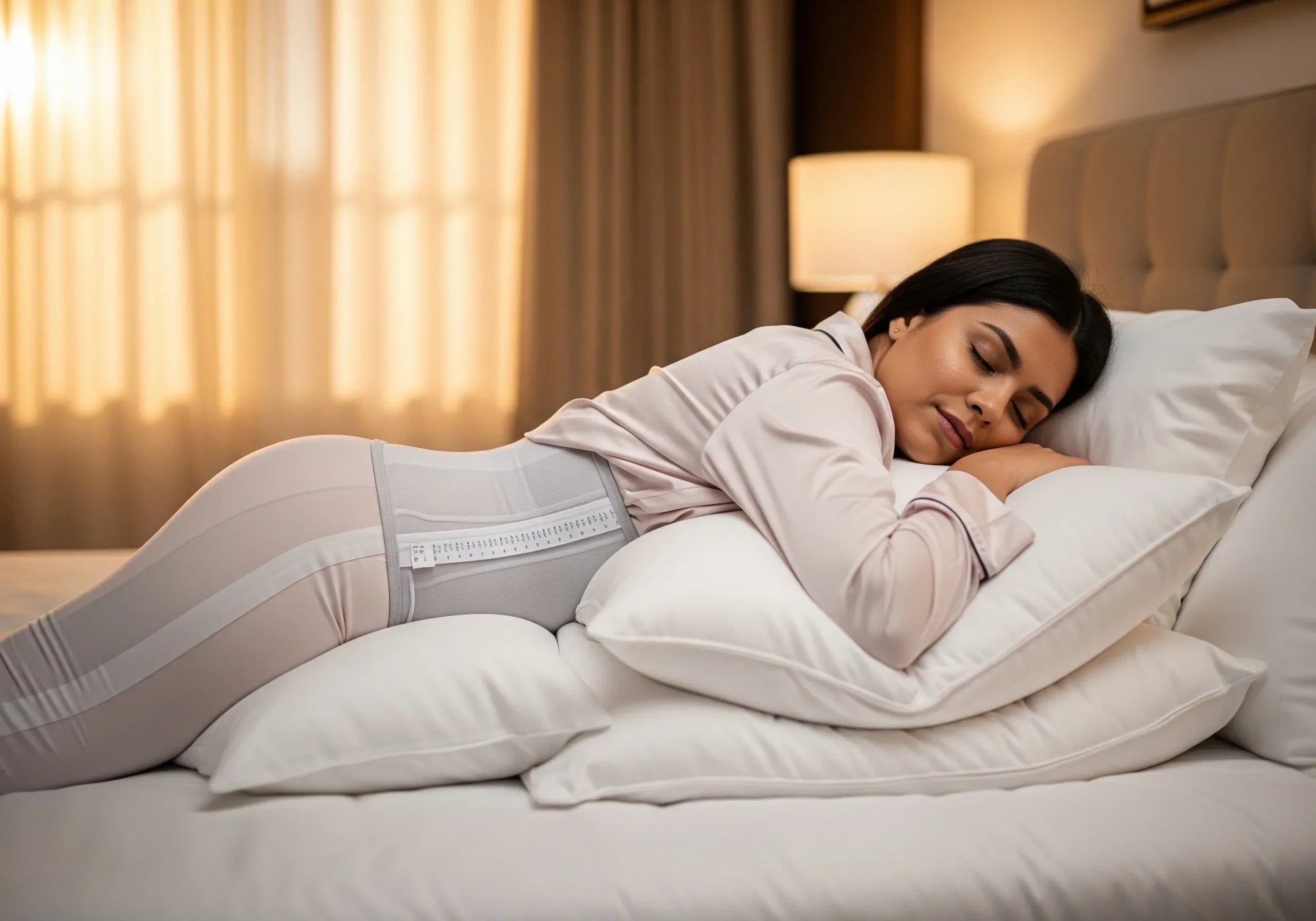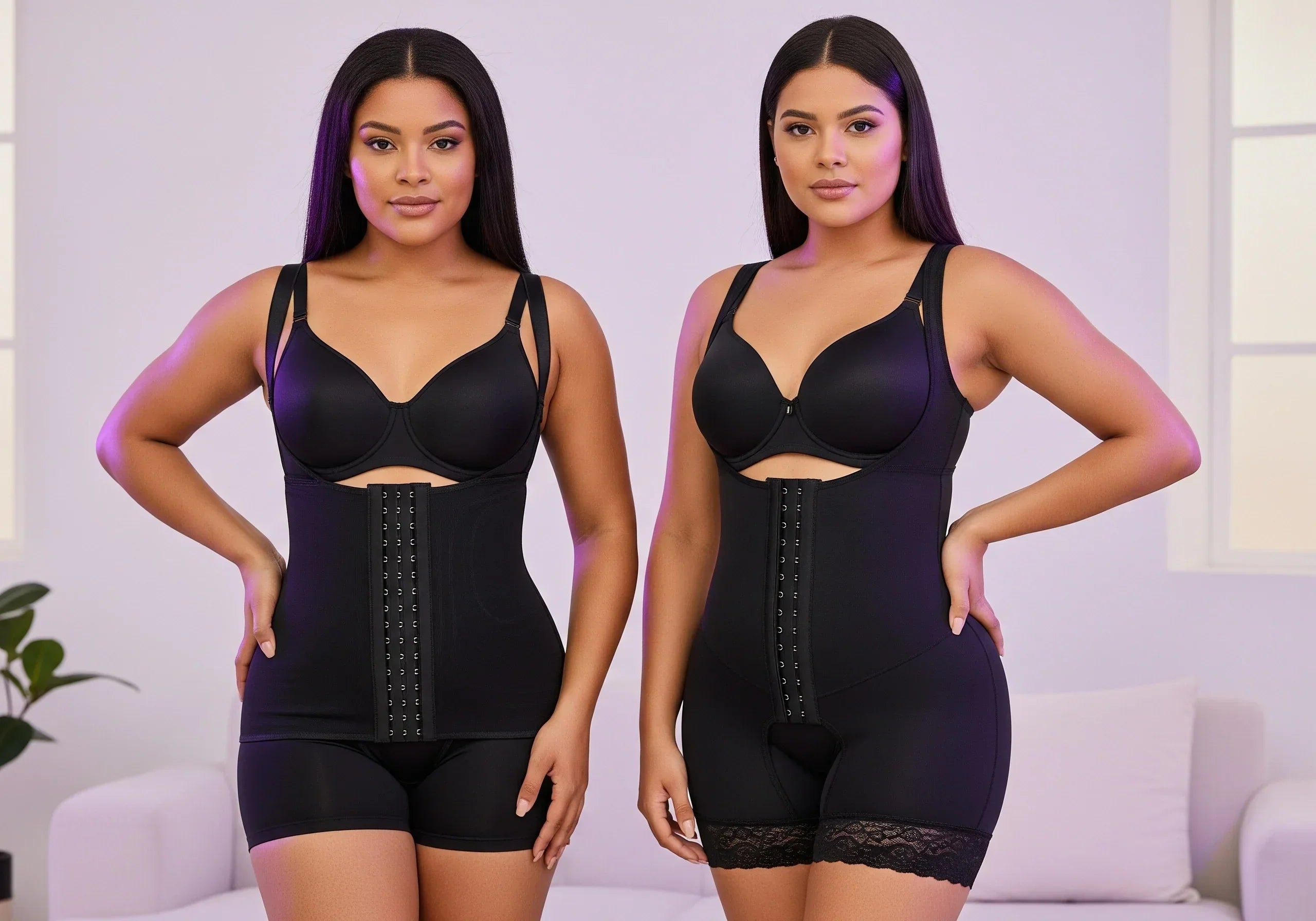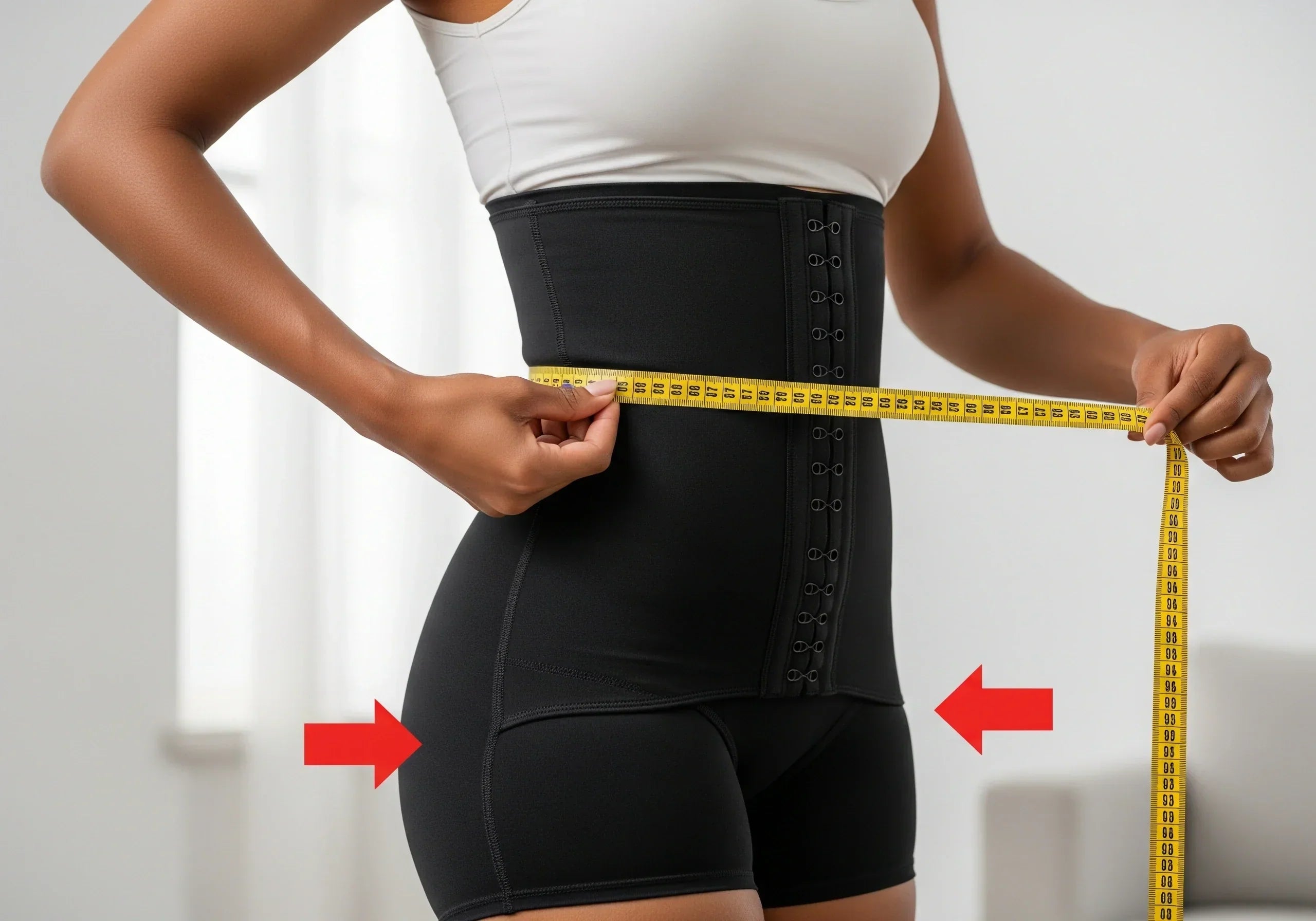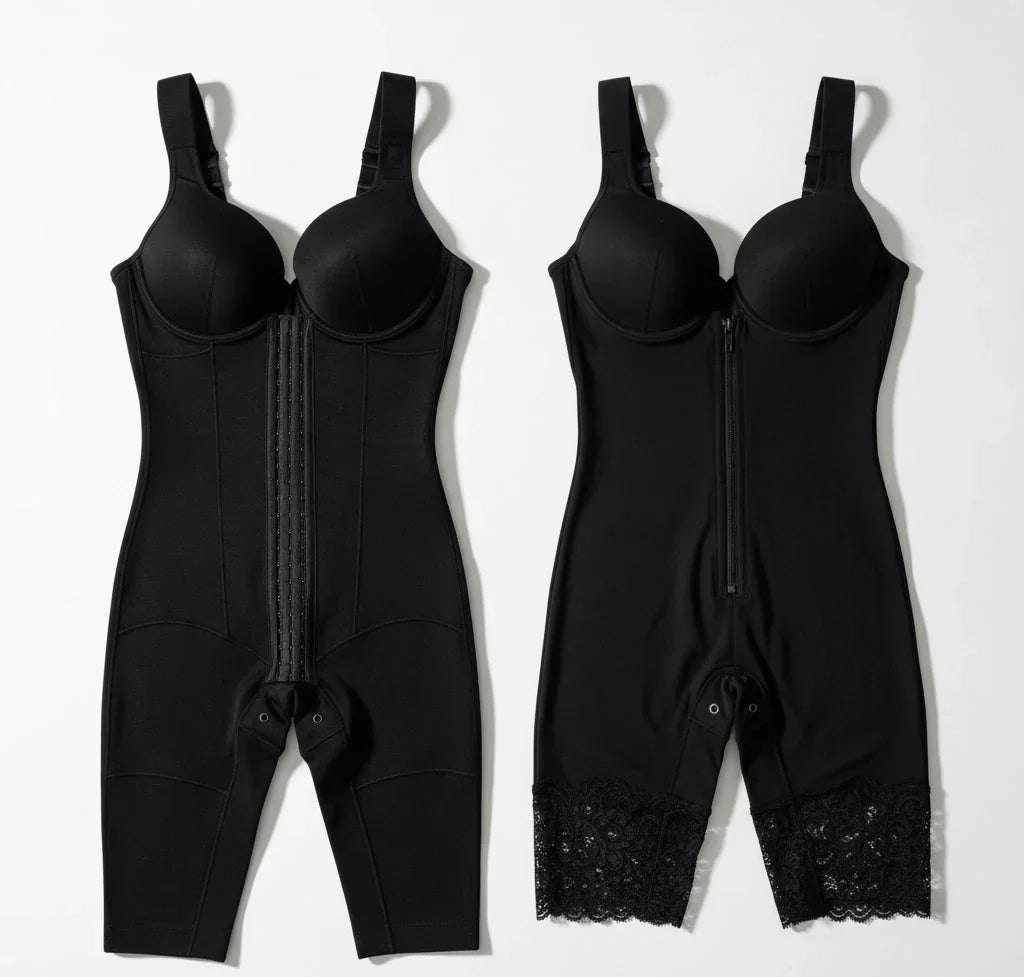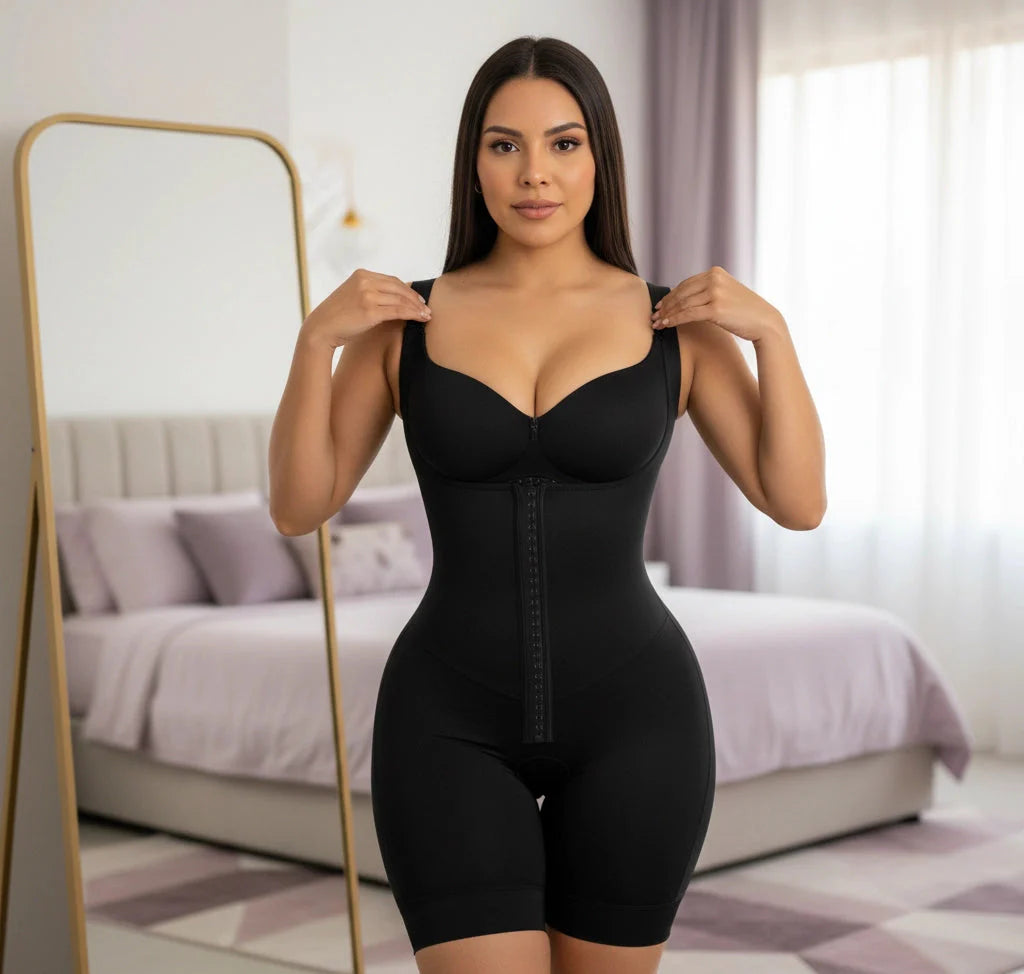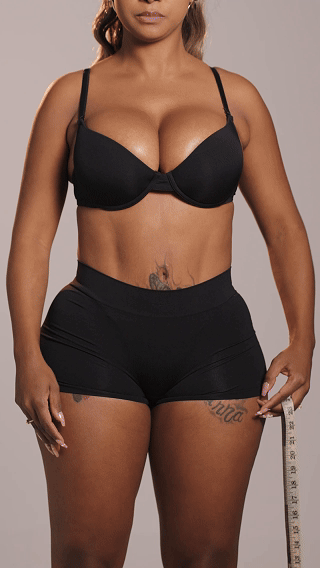One of the hardest parts of recovery after liposuction or a BBL is learning how to sleep with your faja on. Since you’ll be wearing it 24/7 during the first weeks, nights can feel especially challenging. The good news? With the right adjustments, you can sleep comfortably in a faja while still getting the benefits of compression.
Why Sleeping in a Faja Matters
While you sleep, your body is healing, swelling is reducing, and tissues are settling. Sleeping without a faja may cause fluid buildup, uneven compression, or slower recovery. That’s why most surgeons recommend keeping it on—even overnight.
Best Sleeping Positions for Recovery
BBL Patients
Sleep on your stomach or side to avoid pressure on the glutes. Consider using a BBL pillow for support if you must recline slightly.
Lipo or Tummy Tuck Patients
Sleeping slightly elevated on your back with pillows under your knees helps reduce swelling. A recliner chair can be more comfortable during the first few weeks.
How to Make It More Comfortable
To make sleeping in a faja more manageable, layer soft clothing like a cotton tank top underneath to reduce irritation. Adjust the straps slightly before bed if they dig in. Use extra pillows around your body to prevent rolling into uncomfortable positions, and rotate between two fajas so you always have a clean one ready for bedtime.
Common Struggles & Fixes
Problem: Overheating at night.
Solution: Choose breathable Colombian fajas with cotton lining and keep your room cool.
Problem: Feeling squeezed or restless.
Solution: Switch from a Stage 2 to a Stage 1 faja for sleep if your surgeon approves.
Problem: Back or hip pain.
Solution: Use body pillows or a wedge pillow for ergonomic support.
FAQs About Sleeping in a Faja
Can I remove my faja just to sleep?
No, unless your surgeon gives permission. Nighttime compression is crucial for recovery.
Is it normal to wake up feeling sore in my faja?
Yes, some soreness is expected, but sharp pain should be checked with your doctor.
When can I finally sleep without my faja?
Typically after 6–12 weeks, depending on your surgery and healing progress.
Conclusion
Sleeping in a faja may feel uncomfortable at first, but with the right adjustments, it can become part of your routine. Prioritize comfort with the correct position, extra pillows, and breathable fabric, and you’ll wake up feeling supported—not suffocated.
Browse our collection of Stage 1 and Stage 2 Colombian fajas designed with comfort in mind, so you can heal better—even in your sleep. For wholesale inquiries, our official distributors are Cata1og.com and Catalog Mexico.





